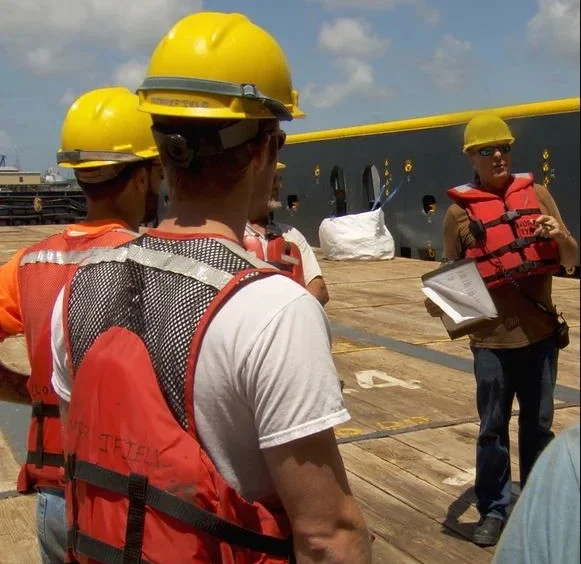What Is a Toolbox Meeting?
A Toolbox Meeting (also called a Toolbox Talk) is a short, focused meeting conducted before starting any job onboard. It’s usually done by the officer or engineer in charge of the task and attended by the crew members who will carry it out.
It’s not a formality. It’s a lifesaving habit.
You may think: “We’ve done this job 100 times before.” But out at sea, one careless move, one misunderstanding, or one missed step can lead to serious accidents. A Toolbox Meeting ensures that everyone is on the same page, about the job, the tools, the risks, and the precautions.
When Is It Done?
Toolbox Meetings are held before starting any non-routine or potentially hazardous work, such as:
- Enclosed space entry
- Hot work
- Working aloft or overboard
- Mooring operations
- Tank cleaning
- Crane or lifting jobs
- Ballast operations
- Repairs involving machinery or hydraulics
- Any job requiring a permit
Even for routine maintenance jobs, it’s good practice to do a quick talk to avoid assumptions.
Who Conducts the Toolbox Meeting?
Usually, the Chief Officer or Duty Engineer conducts it, depending on the nature of the job. For deck work, it’s the Chief or Second Mate. For engine jobs, it’s the Second or Third Engineer.
But it’s not about rank, it’s about clear communication between the team leader and the team.
What Is Discussed in a Toolbox Meeting?
Here’s what a typical Toolbox Meeting covers, in simple points:
Job Objective:
What exactly is the task? What is to be achieved?
Step-by-Step Plan:
How will the job be done? What sequence will be followed?
Team Members and Roles:
Who is doing what? Who is the standby man?
Tools and Equipment:
What tools are required? Are they in good condition?
PPE Required:
Which personal protective equipment must be worn? (Helmet, gloves, goggles, safety harness, etc.)
Hazards Involved:
What can go wrong? (Slipping, falling, gas leaks, sparks, pinch points, etc.)
Control Measures:
What safety precautions are in place? Is there ventilation, gas check, lock-out-tag-out?
Permit Requirements:
Has the proper permit been issued and signed by the Master?
Emergency Actions:
What to do if something goes wrong? Where is the nearest first aid kit or emergency escape?
Questions:
The officer asks: “Does everyone understand the job?” Everyone must respond—not just nod and walk away.
Why Is It Important?
- Prevents Accidents
Many accidents happen because of poor communication or assumptions. Toolbox Talks ensure everyone knows what’s happening.
- Builds Teamwork
Everyone knows their role. No confusion. No overlapping. The job gets done faster and safer.
- Fulfills ISM & Company Requirements
Companies, PSC, vetting inspectors, and auditors look at Toolbox Meeting records. It shows you are working in a planned, professional, and safe manner.
- Creates a Safety Culture
It makes safety a habit, not a rule. It teaches juniors to think before acting.
Practical Tips for Conducting a Toolbox Talk
Keep it short, 5 to 10 minutes is enough. Don’t drag.
Speak clearly. Avoid too much technical jargon.
Make eye contact. Don’t read like a script.
Let the crew ask questions. Involve them.
Repeat critical points, gas check done? breaker locked? harness on?
Always fill and sign the Toolbox Talk form, and attach it with the job permit.
Final Thoughts
To every junior officer and cadet: Don’t treat Toolbox Talks as a tick-box job. Take them seriously. You may be saving someone’s life, maybe your own.
And to seniors: set the example. Conduct the meeting with patience. Encourage feedback. Because when safety becomes a habit onboard, everyone wins.


